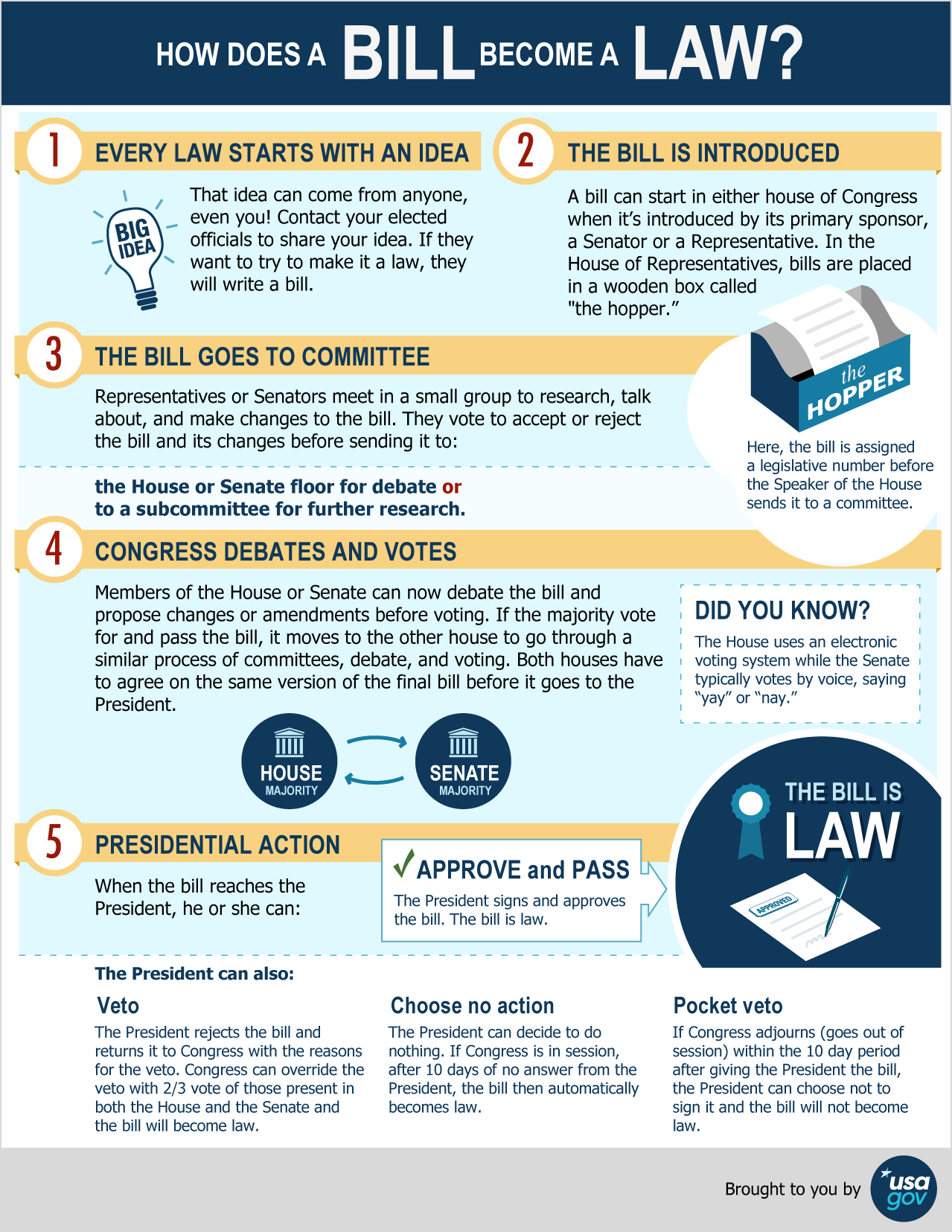Infographic: How a Bill Becomes a Law
Learn how a bill becomes a law with this easy to read infographic. Use this lesson plan with your class.

-
1. Every Law Starts With an Idea
That idea can come from anyone, even you! Contact your elected officials to share your idea. If they want to try to make a law, they write a bill.
2. The Bill is Introduced
When Congress is in session, the Primary Sponsor introduces the bill by placing it in a wooden box called "the hopper.”
Here, the bill is assigned a legislative number before the Speaker of the House sends it to a committee.
3. The Bill Goes to Committee
A small group meets to talk about what they like and don’t like, suggests changes to the bill, and votes to accept or reject the changes, before sending the bill to:
The House floor for debate or a subcommittee for further research.
4. Congress Debates and Votes
Members of the House and Senate can now debate the bill and propose amendments before voting.
Did you know?
The House uses an electronic voting system while the Senate typically votes by voice, saying “yay” or “nay.”
5. Presidential Action
When the bill reaches the President, he or she can: APPROVE and PASS. The President signs and approves the bill. The bill is law.
The President can also:
- Veto: The President rejects the bill and returns it to Congress with the reasons for the veto. Congress can override the veto with 2/3 vote of those present in both the House and the Senate and the bill will become law.
- Choose No Action: The President can decide to do nothing. If Congress is in session, after 10 days of no answer from the President, the bill then automatically becomes law.
- Pocket Veto: If Congress adjourns (goes out of session) within the 10 day period after giving the President the bill, the President can choose not to sign it and the bill will not become law.
